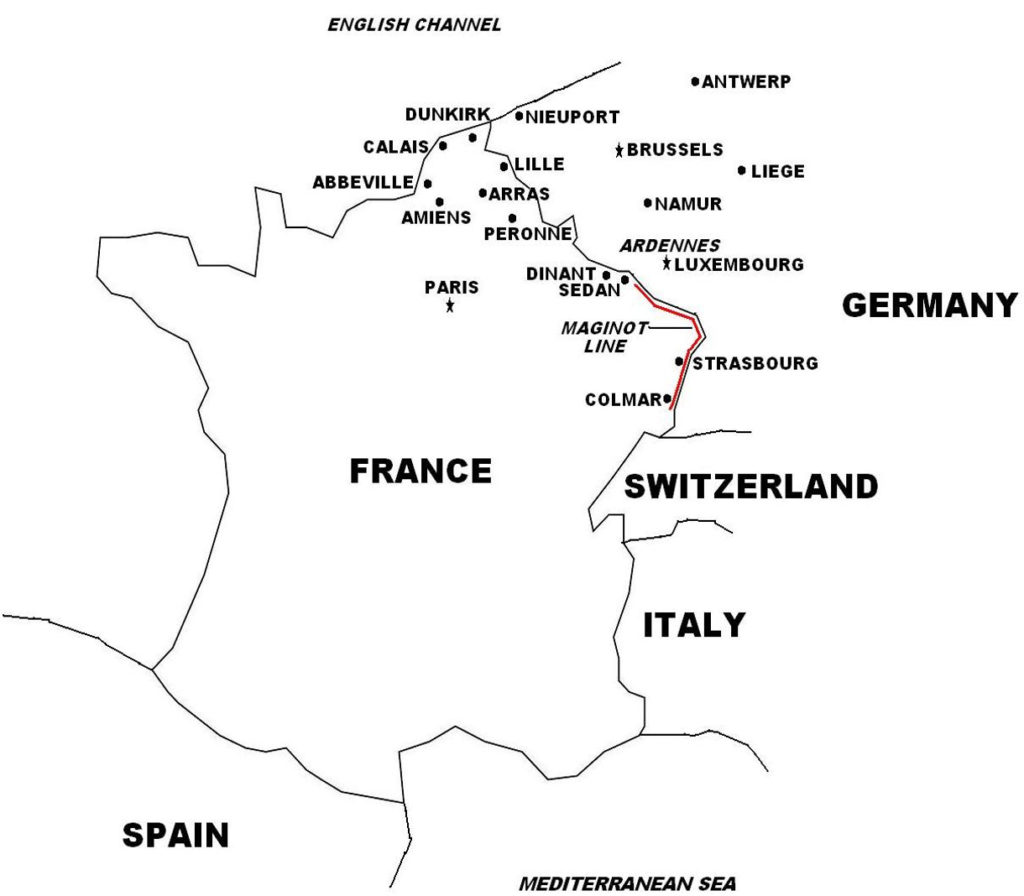Background On May 26, 1940, the British High Command implemented Operation Dynamo, the Allied naval evacuation from Dunkirk, with the first troops numbering 28,000 being evacuated by ships to southern England on that day. Then, the Allies received a stunning blow when on May 27, Belgian King Leopold III asked the Germans for an armistice, and the next day, May 28, 1940, the monarch formally surrendered the Belgian Army. The sudden Belgian capitulation exposed the Dunkirk perimeter’s eastern flank, seriously jeopardizing the evacuation. However, fierce resistance by 40,000 French troops, the trapped remnants of the French 1st Army at Lille against four German infantry and three armored divisions (comprising 110,000 troops, 800 tanks) stalled the German advance that allowed 70,000 more Allied troops to escape to Dunkirk. But as a result of the 4-day siege at Lille, the French 1st Army was destroyed.

The Dunkirk evacuation, lasting from May 26 to June 4, 1940, was successfully carried out: under fierce, constant German air, artillery, and tank fire, and a gradually shrinking perimeter as the Germans broke through the defensive lines, hundreds of small vessels, including privately owned fishing boats and pleasure craft from southern England, were used to assist ships of the British Royal Navy to evacuate Allied troops from the harbor and beaches of Dunkirk. Of the 222 British Royal Navy vessels and 665 other requisitioned boats that took part, 6 British and 3 French destroyers, 24 smaller Royal Navy vessels, and 226 other ships were lost. Also, 19 other British destroyers were damaged, as were over 200 other British and Allied vessels. On June 4, 1940, German forces broke through the last defense line and entered Dunkirk, capturing some 40,000 French troops who had failed to make the evacuation. In total, 331,000 Allied troops were evacuated, of whom 192,000 were British and 139,000 were French. But the British Army left behind all its heavy weaponry and equipment: 700 tanks, 45,000 trucks, 20,000 motorcycles, 2,500 artillery pieces, and 11,000 machine guns.
Case Red The German Army now turned its attention to the south, to the conquest of Paris and the rest of France. With 140 divisions (130 infantry and 10 panzer) in a reconfigured Army Groups A and B (and Army Group C inside Germany facing the Maginot Line), the Wehrmacht massed along a 600-mile front along the Somme and Aisne rivers stretching from Sedan to the Channel coast (the French Weygand Line). Facing the Germans were 64 French divisions comprising three Army Groups, including 110,000 French soldiers who had been evacuated in Dunkirk but were repatriated to France via Brittany and Normandy. Also arriving were two other Allied infantry divisions, one British and one Canadian, supplementing one British infantry and elements of one armored division as well as Czech and Polish formations already in France, a combined total of 173,000 troops.
The debacle in Belgium greatly depleted French military resources: France’s best units, comprising over 60 divisions, were lost, as were elite tank formations and a considerable number of heavy equipment and weapons. However, increased moral and resolve swept through the remaining French Army: officers and men were fighting for France’s survival, supply and communication lines were closer, and army commanders and surviving units had gained battle experience. General Weygand implemented a “hedgehog” defense-in-depth network of mutually supporting fortified artillery positions, supported by armor and air cover, aimed at inflicting heavy losses to the attacking German forces.
On June 5, 1940, German forces launched Fall Rot (“Case Red”), the invasion of Paris and southern France. (Excerpts taken from World War II in Europe.)
